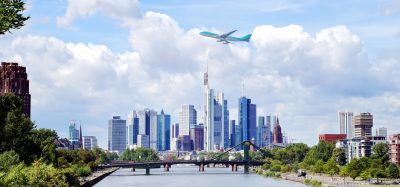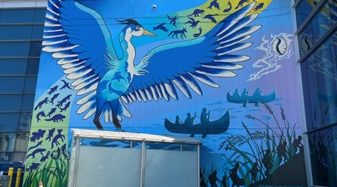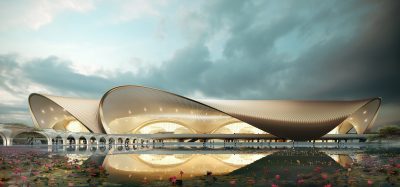Aerotropolis 4: A Powerhouse of Tremendous Economic Potential?
Posted: 5 April 2016 | Dr Sarkar | No comments yet
Aerotropolises, mostly built around large metropolises, are a powerhouse of tremendous aviation-mode transport and economic potential; especially for export-oriented international business, technology park, eco-tourism, etc. Cited below are some of the illustrative cases of aerotropolis with focus of eco-innovation and technological marvels. We take a look at some case studies from Canada and USA…
Gillespie Field San Diego County Aerotropolis
So what will the development of an aerotropolis do for the community? It will increase the tax base. It increases the economic viability of the area. It will create jobs, which is something we desperately need.” ECEDC has determined that the airport and its business parks now contribute over $400 million per year to the local economy and provide nearly 3,200 jobs.
In terms of the number of operations, Gillespie Field ranks number one among San Diego County airports. It also generates enough revenue to cover operations at all of San Diego’s regional airports. This revenue comes from airport operations and property taxes on the surrounding industrial area1.
There are 55 acres in aviation use and 37 acres of industrial use land available for development. Jo Marie Diamond, president and CEO of ECEDC, explained that the aerotropolis concept is about developing businesses outside the airport gates. The planning area could extend for miles beyond Gillespie Field, but there are no plans to participate in development of the airport itself.
Join us live: Shaping the Next Generation of Hold Baggage and Air Cargo Screening
Join us live for an insightful webinar on 11th December at 14:00 GMT, in collaboration with Smiths Detection, as we explore the strategic balance of operational efficiency, regulatory compliance, and sustainability in high-volume security environments.
This session offers a focused look into future-proofing your security strategy.
Key learning points
- Cost Reduction: Strategies to minimize bag travel time while simultaneously reducing operational costs.
- Regulatory Roadmap: Insights into the next wave of regulatory changes and their impact on future investment decisions.
- Sustainable Systems: Practical approaches to building sustainability into security systems and lowering the total cost of ownership (TCO).
- Scalable Solutions: Real-world examples of scalable systems supporting current airport growth and preparing for tomorrow.
Register now for expert insights, case studies, and actionable strategies on operational efficiency!
Strategic Location
Dana Quittner, an education consultant who chairs the ECEDC’s Gillespie Field Committee, said one of the things that makes the airport a good aerotropolis candidate is its strategic location near several freeways: State Route 52 on the north, Interstate 8 to the south, State Route 67 on the east, and State Route 125 on the west.
Smart Growth Perspective
An aerotropolis should incorporate ‘smart-growth’ concepts. That means compatible development near residential communities, schools, and existing transit would reduce the need for people to make long driving commutes. This strategy supports the economy and protects the environment. A recent Caltrans Airport Forecasting Study found that education and employment trends have created a demand for office and commercial growth that is compatible with development near Gillespie Field2.
Aerotropolis: City of Leduc, Alberta, Canada
The aerotropolis project in the City of Leduc began in 2009.
Although an aerotropolis concept applies to a broader area on all sides surrounding the airport, approximately 640 acres of undeveloped land is currently available for future development and is located immediately south of the Edmonton International Airport and west of Queen Elizabeth II Highway.
The site can also be accessed via local road networks from existing low density residential neighbourhoods such as Bridgepoint and Deer Valley. It is located within the existing city boundary and is privately owned.
The unique approach utilised by the city included modelling air, traffic and ground noise around the airport and developing a policy plan called ‘Aerotropolis Integrated Land Use’.
Site Context
The Compatibility Plan (AILUCP) is a 50-year document designed to protect the current and future development on lands abutting the Edmonton International Airport, as well as protecting the airport’s present and future operational needs.
This plan highlights the potential of the undeveloped area immediately south of the Edmonton International Airport to become one of North America’s premier warehousing, distribution, and multi-modal hubs.
The report also stresses that in addition to offering long-term economic growth, the future development should also provide for local community needs by supplying sufficient land for commercial, recreational and office space.
City of Leduc Municipal Development Plan (MDP)
City of Leduc’s Municipal Development Plan (MDP) designates the subject site as predominantly ‘Aerotropolis Business Industrial’ development with transitional residential and business mixed uses along the southern portion of the site adjacent to existing low density residential neighbourhoods.
In addition, a variety of commercial development policies support development of industrial and business parks on subject sites with focus on a wide range of uses such as industrial, logistics, warehouse, distribution, eco-industrial, agri/food-business and high-quality office park. The MDP policies provide a strong framework for future development of this site as one of North America’s leading aerotropolis projects.
Leduc County Inter-Municipal development Plan (IMDP)
The City of Leduc and Leduc County Inter-municipal Development Plan (IMDP) is consistent with the City of Leduc Municipal Development Plan and designates a predominant portion of the subject site as E1-Port Alberta Business Industrial policy area. This policy area provides a framework for future business industrial developments consistent with the future vision for Port Alberta. The southern portion of the site is designated for transitional residential uses.
Design charrette
The design charrette, held on 19 October 2012 with over 30 attendees, was established to strategise how best to utilise land and integrate economic activities south of the Edmonton International Airport. Groups represented included Alberta Transportation, Edmonton International Airport, Edmonton Regional Airports Authority, Port Alberta and Melcor Developments.
The presence of diverse stakeholders ensured a comprehensive dialogue and a creative exercise for establishing future vision for the site. The format of the day began with a keynote presentation from airport transportation planning expert Prof. Douglas Baker from Queensland University of Technology, Brisbane, Australia. The participants were then divided into five separate groups.
The charrette exercise was divided into two parts. In the first part, each table discussed ongoing initiatives within the area and their values for potential development. This exercise was helpful in establishing trust and breaking down communication barriers. It also established a strong foundation for the design exercise.
In the second part, all groups were tasked in visually describing, sketching and mapping future land uses, infrastructure, economic activities and housing. After more than an hour of designing, the groups presented their concepts to the others with time for questions and discussion.
There was visible unity in the designs, programmes, and needs as well as a sense of development cohesion among the group; participants agreed upon the majority of requirements that were needed to make this area a successful future aerotropolis.
References
- http://timesofsandiego.com/business/2015/04/21/aerotropolis-concept-proposed-for-brown-gillespie-fields/
- http://eastcountyedc.org/aerotropolis-2/
About the author
After obtaining his Master in Science from the Madras University, and Doctorate Degree in Geochemistry and Earth Sciences from the University of Wales, Dr. A N Sarkar worked for more than four decades in the Petrochemicals-related fields, R& D, Environment, Central Ministries, External Donor Agencies, and Academics. He served as a Chair Professor-National Agricultural Bank for Rural Development (NABARD); Professor, University of Petroleum and Energy Studies.
More recently, Dr. Sarkar has worked as a Senior Professor (International Business) and Dean (Research) in the Asia-Pacific Institute of Management, New Delhi. He has also served as convener and member secretaries in various Inter-Ministerial Committees on ‘Natural Resources Management’, ‘Sustainable Development’ and ‘Renewable Energy’. Dr. Sarkar has so far authored 22 Books and more than 100 research papers, published in reputed national and international journals.
His books include: Energy Security, Global Climate Change & Sustainable Energy Development, Emission Trading & Carbon Management and Petro-Economics (Pentagon Press, New Delhi); Global Climate Economics (LAP, Publishing Corporation, Germany); CSR in Mining Industry (LAP, Publishing Corporation, Germany), Green Banking, Microfinance, Eco-Industrial Clusters (Atlantic Publishing House), Environmental Economics, Energy, Environment and Global Climate Economics (Discovery Publishing).
Click here to contact Dr Sarkar.
The International Airport Summit is open for registration!
Date: 19 – 20 November 2025
Location: JW Marriott Hotel Berlin
At our flagship event of the year, we will dive into the future of airport operations, with expert-led sessions on passenger experience, innovative smart technologies, baggage handling, airside operations, data, security, and sustainability.
This is where global airport leaders come together to share insights, challenges, and real-world solutions.
Limited complimentary passes are available for eligible professionals – first come, first served!

















